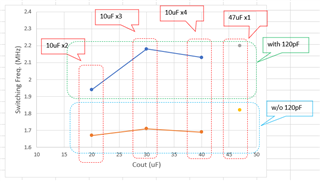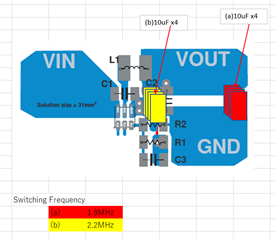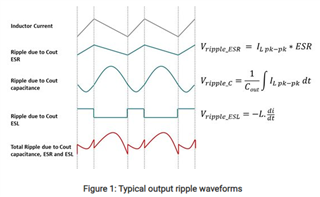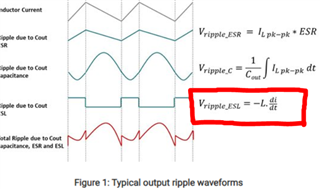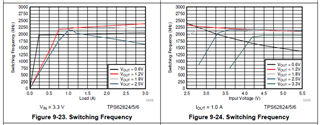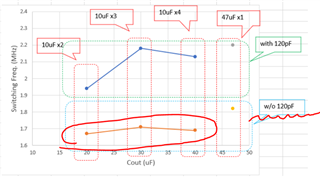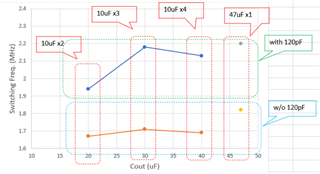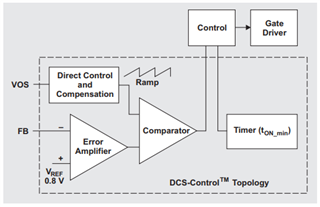Hello,
I have some questions about the switching frequency of TPS62825.
It is related to the question in the URL below.
e2e.ti.com/.../tps62825-change-of-switching-frequency-by-capacitor-at-vout
I measured the switching frequency of TPS62825 under various conditions, and the results are shown in the table below.
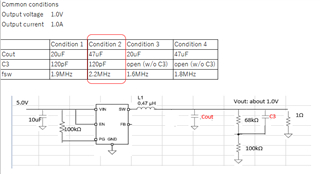
The purpose of the measurement is to find the condition at which TPS62825 operates at 2.2MHz for our application.
Fortunately, I was able to find the condition(which is condition 2), but the mechanism behind it is unknown.
Without understanding the mechanism, I can't determine whether condition 2 is robust against component variations, temperature, and other factors.(Whether frequency remains stable at 2.2MHz.)
Could you let me know the reason why the switching frequency increased in condition 2?
I read the previously introduced application note(slyt646.pdf) to try to understand the reason behind it, but I could not reach a conclusion.
Regards,
Kei



